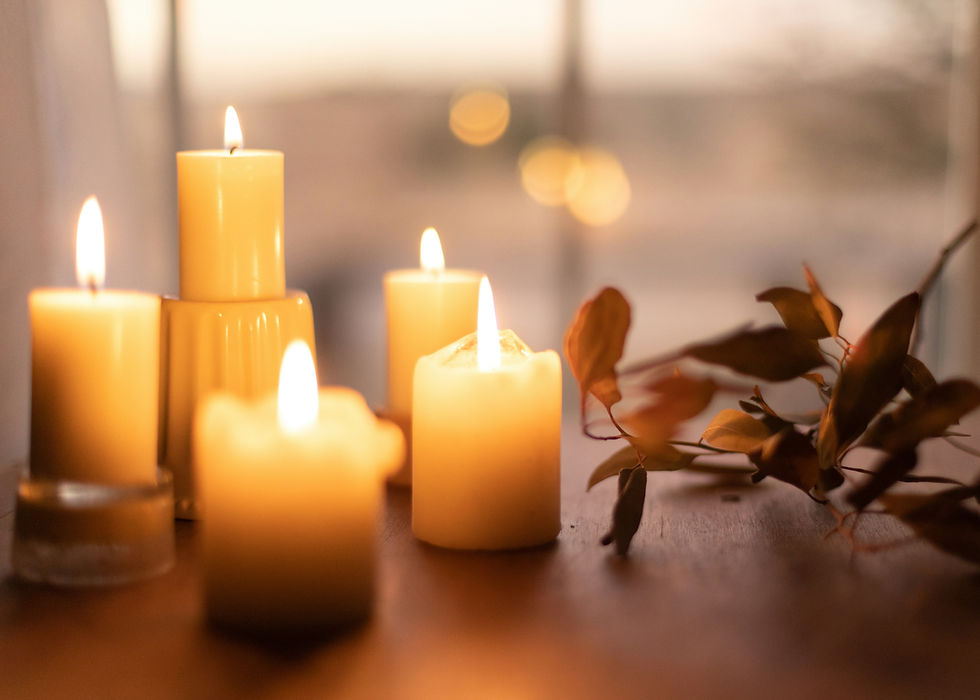No one told us that our adolescent wounds would surface when we had teens of our own.
- Lori K Walters
- Jul 2
- 5 min read

Mei had been silent for a full minute. I had asked her if she could recall having this feeling at any other time in her life. She had closed her eyes; I waited in silence and held space for whatever was arising in her.
Then, in a tiny voice, she said, "I think part of the reason my daughter's behavior annoys me so much is that I did the same thing when I was a teenager and my dad got mad and said I was extremely, disgustingly selfish. I can picture the look of disgust on his face. I can feel that shame right now as we speak.”
How our adolescent wounds get stirred up by our teens
When our teen and young adult kids go through heartache, anxiety and confusion, our memories of our own youth cannot help but be awakened. We remember how much it hurt when we were left behind by our friends, had our first panic attack, failed a course, couldn't decide, lost our self-esteem, etc.
In moments of keen self-awareness, we recognize that our kid's experience is not ours and re-center ourselves. But more often, against our best intentions and before we know it, we get emotionally entangled in their situation. Then, what you call ‘empathy’ or ‘justified anger’ is actually an expression of your feelings about your own experience when you were younger. It could be an incident that you clearly remember, like Mei, or it may be something that your system repressed as a way to cope.
When there’s intensity with your teenager, your adolescent wounds get poked - we all know what that feels like. Sometimes they burst open and the impact of your adolescent experiences, nicely tucked away for a couple of decades, finally makes themself known. And you feel like you’re 16 again (ugh).
And then we have a choice: more repressing or healing.
And it is a choice.
You can tell yourself things like, “It’s just the way I am. There’s nothing I can do about it. These scars can’t be erased. It’s my fate...”
Or you can recognize that this wounding is being brought to the surface now for healing. Not to make you suffer through it all again but so that you can free yourself from this suffering.
Yes, you’re in the middle of a rough patch with your young adult child and bogged down with work and running the house and caring for your aging parents and driving kids around. And yet, here it is, a tender wound calling for your attention.
Contrary to all appearances, now is the perfect time to retrace your steps back to your own adolescence, view it with a matured perspective, soothe the injured area and finally find a way to experience and express the emotions you had to suppress back then.
Why this can be healed now
When we were teenagers, we were old enough to see what had happened in our early childhoods and we understood that it was affecting our adolescent lives. We were confused trying to make sense of the dysfunction that occurred, equipped only with our 16 years of life experience, our unregulated hearts and our undeveloped brains.
Do you remember that time in your life? What were you angry about? What really scared you? What sorrows were you carrying?
And what happened with all those teenage emotions? For most of us, they went underground.
Until now.
You’ll know that your wounded inner teenager is present if
You feel a heightened craving to be seen and heard and accepted for who you are.
You feel like you absolutely must express your feelings (and they are disproportionately strong).
You thirst for more independence.
Your rebellious spirit is running amuck with behaviors like overspending, procrastination, binge eating, rashness, etc.
That’s the call to turn inward for healing.
Tending to your Inner Teenager
1 Acknowledge the pain.
The first step in healing is being willing to look at the pain, admit it exists. This calls for courage and gentleness. And please, if this triggers something big, talk to a therapist.
Go gently and remember, your inner teenager’s pain stems from a belief that, if they were treated so unfairly by their parents and teachers, if they were ditched by friends and lovers, if they couldn’t cope with school or hold down a job, if they failed algebra, if they were constantly annoying or disappointing their parents, if they were always sad or scared or furious …. there had to be something fundamentally wrong with them.
How can you let that inner teenager know that they’re ok the way they are?
2 Identify your teenage beliefs.
Picture yourself alone in your teenage bedroom. Remember the colour of the walls and clothing strewn about. Picture what’s on your bookshelf or bedside table.
What were you believing about yourself back then? What were you told - that you were too quiet or too loud, too strong or too weak? That you didn't fit in? That you needed to be fixed? That you were unlovable?
When you touch this wound, you're going to feel the pain again. Be oh so tender with yourself and if it feels scary, ask someone you trust to stand beside you and/or light a candle and call in your ancestors, guides and angels.
Then allow yourself to weep, kick and scream, or curl up under the covers. Trust the emotions to rise like smoke from their cloudy corners and be released back into the atmosphere, at long last.
Exhale.
3. Acceptance of Teenage-you.
In the space created by your emotional release, plant a new belief that you are just right.
This requires you to be the best, loving guardian to that teenage part of you. To be the one that makes them feel safe to be exactly as they are. The adult who sees their mistakes without judging or berating but offers words of encouragement. The one who truly and fully accepts them and says all the things you wish someone had said to you in those tumultuous years.
Hold yourself. Talk to yourself. Take loving action toward yourself. Believe yourself.
Healing wounds like these takes time. There’s no ritual that makes it evaporate all at once. Healing is a ‘journey’ that we take for the sake of our inner peace and for the sake of being able to bring all our gifts not the world.
So, take another step. And as you do, be gentle with yourself and the people in your life.
Trust that releasing old pain will bring you a new sense of freedom and self-acceptance.
As we tend to our wounds, large or small, we pass healing on to the next generation. With greater self-acceptance comes greater acceptance of your teenager, who they are right now and who they’re becoming. And this is the sacred role of parents – to shine light into the future.




